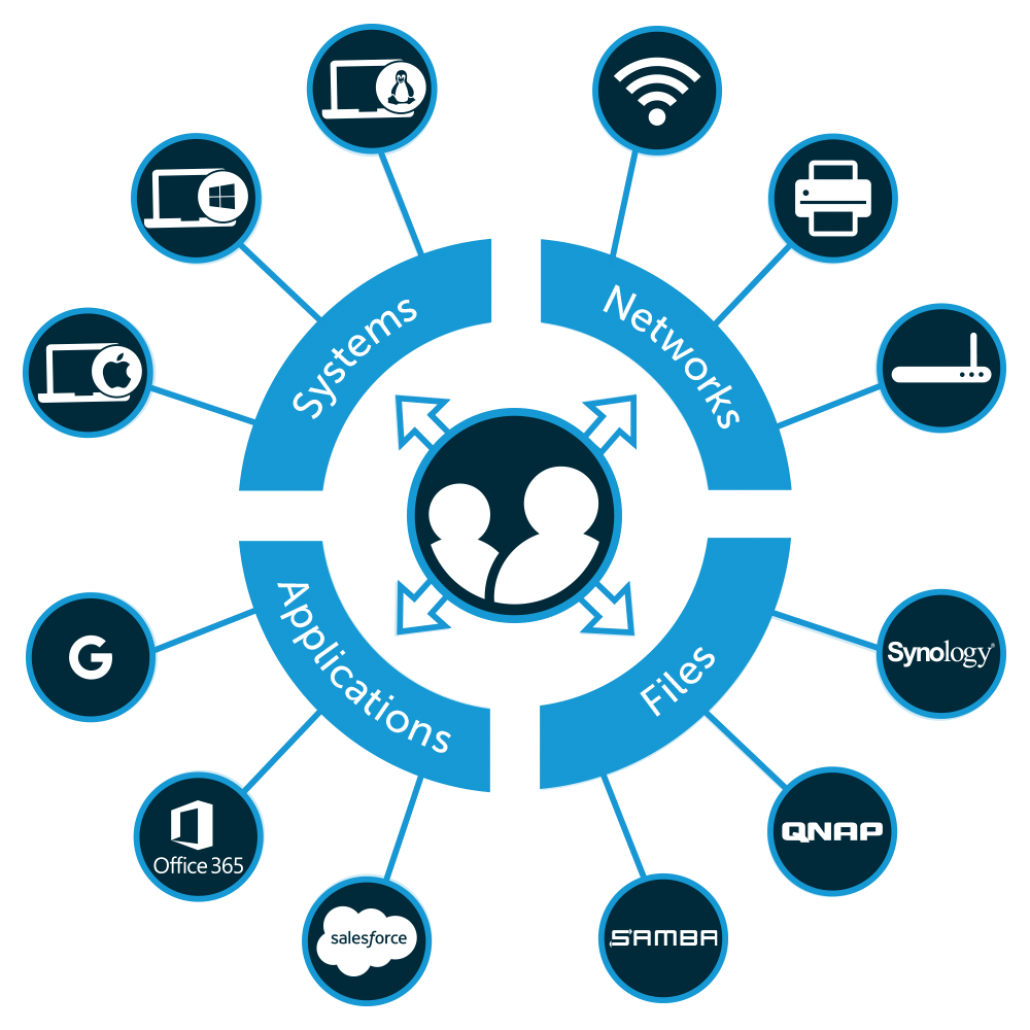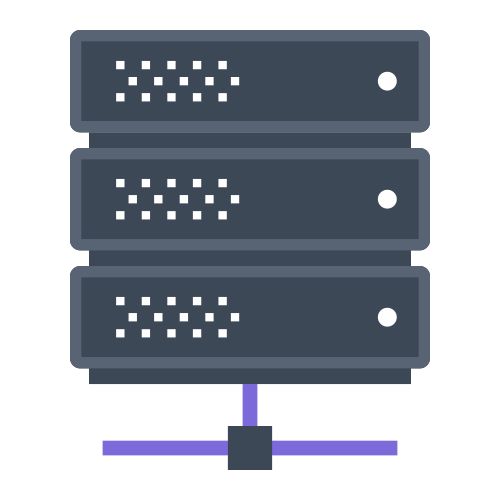Organizations are shifting their IT environments to the cloud. So far, it has been easy to migrate email, productivity software, and file storage to the cloud, and now many organizations are looking for a cloud directory service to centralize authentication and authorization to these modern IT resources. One option that many are considering is JumpCloud.
However, a directory service is a core piece of infrastructure, and as such, IT admins are pretty serious when it comes to weighing the pros and cons of implementing such a solution. Consequently, many are wondering, “What is the value of JumpCloud?” If you’ve been wondering this too, let’s explore the intangible and tangible value JumpCloud brings to organizations.

First, What is JumpCloud?

Before diving into the value of JumpCloud, we should walk through the specifics of what JumpCloud can do for an organization. As a cloud directory service, JumpCloud securely manages and connects users to their IT resources. This includes the following:
- Systems: Mac, Windows, and Linux
- Servers: on-prem and cloud
- Applications: LDAP and SAML based
- Productivity Suites: G Suite and Office 365
- File Storage: physical and virtual
- Networks: Wired and wireless via RADIUS
JumpCloud’s multi-protocol and vendor independent approach enables IT admins to empower their end users with the IT resources they need to do their job and still maintain control. So how does this unique ability translate into value for organizations?
The Intangible Value of JumpCloud
When discussing the value of JumpCloud, the first place to start is the big picture benefits, or in other words, the intangible gains that come with using JumpCloud, including more agility, control, security, and efficiency. Each of these intangible benefits are described in detail below.
Enhances Agility

One prominent way that JumpCloud promotes agility is by giving organizations choice in the technology they choose to implement. This allows admins and users alike to leverage the IT resources that are the best fit for the job, instead of only the tools that are compatible with the identity provider. JumpCloud’s agility can be seen in the variety of protocols it supports (LDAP, SAML 2.0, RADIUS, RESTful APIs, and more) and also in it’s cross-OS support (Windows, Mac, Linux).
Here’s another, more specific example. JumpCloud enables sysadmins to tightly integrate the directory service with tools like chatops and intelligent automation. These new technologies can supercharge automation and efficiency at organizations. JumpCloud customer Grab is using Workato to integrate their cloud directory service with Slack and their HRIS. Doing so has enabled them to increase automation tenfold, saving around 3000 man-hours. If JumpCloud couldn’t be adapted like this, Grab would have been stuck wasting a tremendous amount of time. Flexible identity management can produce powerful results when leveraged in a strategic manner.
Refines Control

The power to bring all IT resources into one identity management platform equips sysadmins with precise control over what users are leveraging and who has access to what. When IT is in control, a number of benefits surface. First, it’s easier and faster to help users overcome technical issues when they arise.
Next, shadow IT is eliminated because you are able to provide users with access to the best tools available, so there’s no longer a reason for users to go around IT. As a result, sysadmins won’t just think an ex-employee no longer has access to resources—they’ll know. EdgeConneX in particular had this to say about gaining fine-tuned control with JumpCloud:
“Offboarding employees is much simpler and more secure because we don’t have to remember to touch every system or company resource to which they had been granted access. To offboard an employee, we go to one place – the JumpCloud Admin Console. We delete their account, and it deletes their WiFi access, their PC login, application access, and server access. It has made offboarding so much quicker. From an audit standpoint, JumpCloud greatly reduces our risk.”
Strengthens Security
On that note, a comprehensive identity provider makes it possible to centrally enforce strong security measures across all layers of your IT environment:
- IDENTITIES: Complex passwords, MFA, and SSH key authentication (where applicable) can be used to strengthen user identities.
- SYSTEMS: IT admins can fortify their systems with features like MFA at the systems level and policy management.
- DATA: JumpCloud’s Full Disk Encryption (FDE) policy empowers IT to encrypt the hard drives of their Windows and Mac fleets with the click of a few buttons.
- NETWORKS: RADIUS-as-a-Service allows you to bolster network security a couple of ways. Eliminate shared SSIDs and passphrases by providing employees with their own unique credentials to access the WiFi. Utilize RADIUS reply attributes, like VLAN tagging, to segment a single physical network. This way you can be sure the Sales team doesn’t have access to production servers, and engineers don’t have access to financial documents.
Increases Efficiency

Because you’re able to bring all of your users, systems, servers, applications, file storage, and networks into one platform, everybody can enjoy increases in productivity. IT admins don’t have to waste time navigating between solutions to manage their users. Plus, JumpCloud comes loaded with an intuitive UI, APIs, and a Powershell module to help sysadmins cut down on how much time they spend onboarding and managing users.
Employees on the other hand only have to keep track of one password, so they no longer experience lockout delays due to forgetting it. When they do, they can easily reset it themselves without involving IT. Lastly, they also no longer have to expend energy signing into each individual application (a task that can waste hours over time). Instead, they sign in once to the JumpCloud User Portal, and they have immediate access to all of their apps.
The Tangible Value of Directory-as-a-Service
Of course, we can’t just consider the intangible benefits and ignore the financial considerations. There are a number of different areas to analyze when it comes to discussing the financial value of JumpCloud. If you would like to analyze the components we mention below on your own, just ask for our ROI calculators (you can email us at [email protected]).
Replaces Active Directory and Its Add-Ons

JumpCloud is a full cloud replacement for Microsoft® Active Directory®, and eliminating AD can save organizations a ton of money and time. You see, Active Directory was built in a different time when on-prem, Windows-centric environments made sense. Today, there are just too many great options for IT resources, and most are based in the cloud. Leveraging AD in this modern IT world requires the use of many add-ons, each with its own price tag. In fact, organizations use 8+ tools to secure user access in a heterogeneous IT environment.
Alternatively, JumpCloud is a comprehensive, open directory service that offers single sign-on (SSO), MFA, password management, device management, and so much more. The best part is this is all offered for one price. Not only is this cheaper, but IT admins can also manage their environment much more efficiently because they can do it all from one pane of glass.
Eliminates Infrastructure

Another component that makes on-prem directory services like Active Directory pricey and inefficient is that they require a hefty amount of on-prem infrastructure. As many IT admins know, authentication services can’t go offline. They need to be available 100% of the time, and ensuring this level of availability requires a lot of hardware and labor.
When an organization tries to do this themselves, it’s expensive, time consuming, and a hassle because they need to make sure there isn’t a single point of failure. JumpCloud Directory-as-a-Service, on the other hand, is completely cloud-based. So, your hard earned dollars no longer have to go towards purchasing and maintaining the following components:
- Physical servers
- Load balancers
- SQL server – real time sync
- ADFS + web proxies
- Dirsync
- RADIUS and LDAP infrastructure
- System security monitoring
- Energy costs
- Cost of redundancy and resiliency
- Costs of managing it all
- Costs of upgrading every few years
With a cloud identity provider, the only costs you have to worry about is the fee to use it and the time to manage user access within it.
Requires Minimal IT Staff

Because IT environments are streamlined when JumpCloud is in use, IT organizations don’t need as many IT staff as they would using something like Active Directory or OpenLDAP. For instance, Cabify is able to support 1,500 users across 11 countries with just 7 IT staff members. The average hourly wage for an IT administrator is $41.51, so maintaining the same IT staff as the rest of the company grows can be a huge cost saver.
The value JumpCloud brings to the table is compelling, and altogether, makes a strong case for how your organization can flourish in expected and unexpected ways. With one solution, you can reduce costs, increase security, and experience gains in agility, control, and efficiency.
